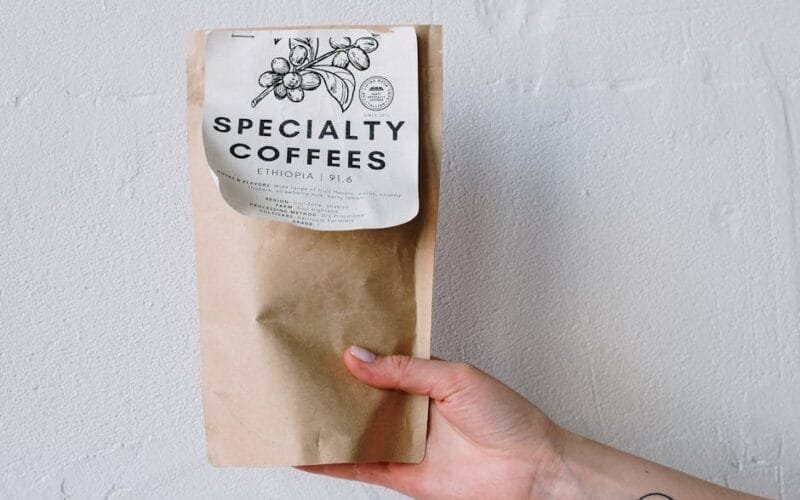
** The Evolution of the Modern Café: Adapting to the Rise of Home-Brewing****
**
In an era where the art of coffee brewing is increasingly democratized, a new breed of connoisseur has emerged—the home barista. This transformation, catalyzed by global lockdowns and a burgeoning appreciation for high-quality beverages, has not only reshaped consumer habits but also forced cafés to reconsider their role in the evolving coffee landscape. As more individuals opt to craft their favorite brews within the sanctity of their homes, what does this shift mean for the future of these cherished community spaces?
**The Birth of a New Era**
When the world came to a halt during the early days of the COVID-19 pandemic, so did many public gathering spots. Yet, amidst the chaos, a new trend began to take shape: the rise of the home barista. With their local cafés temporarily closed or operating under strict limitations, consumers sought solace in recreating the café experience at home. This shift was not merely a temporary measure but a profound transformation that has since become a permanent fixture in the lives of many coffee enthusiasts.
Flavored syrups, ceremonial-grade matcha, and barista-quality milk are no longer the exclusive domain of coffee shops; they have become staples in many home pantries.
The proliferation of user-friendly equipment and high-quality products has played a significant role in this evolution. From beginner-friendly espresso machines to sophisticated cold brew makers, the market is flooded with options designed to elevate the home brewing experience. Flavored syrups, ceremonial-grade matcha, and barista-quality milk are no longer the exclusive domain of coffee shops; they have become staples in many home pantries. This democratization of high-quality ingredients has not only empowered individuals to craft their perfect cup but also raised the bar for what consumers expect from their daily brew.
**Bringing Quality Home**
The demand for café-quality coffee at home has spurred innovation and collaboration among industry leaders. Notable collaborations, such as James Hoffman’s partnership with Cometeer for instant espresso, have brought professional standards within reach of the average consumer. The Aiden Precision Coffee Maker by Fellow is another testament to this trend, offering users advanced control over temperature, bloom times, and brew phases—all from the comfort of their kitchen.
One notable example of this shift is the Meraki x TIMEMORE espresso machine, a beginner-friendly option designed specifically for home brewers. This collaboration highlights the growing interest in accessible yet sophisticated equipment that can transform even the novice into a capable barista.
**The Changing Role of the Café**
While the rise of home-brewing has undoubtedly impacted consumer behavior, it does not necessarily spell doom for cafés. Instead, it presents an opportunity for these establishments to adapt and thrive by embracing their evolving role as community hubs and sources of expertise.
Phuong Van, a former United States Barista Champion and owner of Lava Java in Ridgefield, Washington, has embraced this shift with open arms. Recognizing the growing interest in home brewing, Phuong began offering Breville home espresso machines alongside her café’s traditional offerings. “I decided to sell home machines because my customers have been asking me about home machine recommendations for years now,” she explains. “My customers love it.”
Lava Java has transformed into a space where baristas serve not only as skilled beverage makers but also as knowledgeable guides. Customers feel comfortable seeking advice and guidance, knowing that the café is a trusted resource. “When they purchase a machine from us, they’re already set up for success when they unbox their new machine at home,” Phuong notes. “It’s definitely helped my business.”
“They refer their friends and families as well.
The café has seen consistent patronage, with many customers who purchased espresso machines from Lava Java continuing to visit weekly for fresh coffee beans and specialty drinks. “They also (still) come in to buy drinks from us, because they just don’t want to make coffee at home everyday,” Phuong adds. “They refer their friends and families as well. Altogether, it’s been a huge win-win for all.”
**Meeting Customers Where They Are**
The rise of home-brewing does not signal the end of cafés but rather an opportunity for these establishments to evolve in response to changing consumer needs. By embracing this shift, café owners can continue to thrive by offering a unique value proposition that goes beyond just serving coffee.
As consumers seek the perfect brew at home, those cafés that meet them where they are—by providing high-quality products, expert advice, and a welcoming community space—will continue to flourish. The future of the café is not one of decline but of transformation into a multifaceted hub that caters to both home baristas and traditional patrons.
By embracing this role, these establishments will not only survive but thrive in an ever-changing landscape.
In this new era, cafés must be more than just places to grab a quick cup of coffee; they must become destinations where people can learn, connect, and enjoy the art of coffee in all its forms. By embracing this role, these establishments will not only survive but thrive in an ever-changing landscape.
Questions & Answers
How did the rise of home baristas during the pandemic impact consumer behavior?
The rise of home baristas during the pandemic marked a significant shift in consumer behavior, as individuals adapted to new restrictions and sought to recreate the café experience within their homes. With local cafés either closed or operating under strict limitations, consumers invested in high-quality coffee beans, sophisticated brewing equipment, and online tutorials to enhance their at-home coffee-making skills. This trend not only provided a sense of normalcy and comfort during uncertain times but also fostered a deeper appreciation for the art of coffee making. As a result, many consumers developed a more refined palate and a preference for premium products, leading to increased demand for specialty coffee beans and artisanal brewing methods even after the return to pre-pandemic life.
What challenges do cafés face due to the increasing popularity of home brewing?
The growing trend of home brewing presents several challenges for traditional cafés. As more consumers develop their skills as home baristas, there is a risk of reduced foot traffic and sales in physical café locations. This shift has forced many establishments to reassess their business models and explore new ways to attract customers. Some cafés have responded by offering online classes, selling high-quality coffee beans and brewing equipment, and creating community spaces that go beyond just serving coffee. Additionally, there is a growing need for cafés to emphasize the unique experiences they offer, such as personalized service, social interaction, and a curated atmosphere, which cannot be replicated at home.
What strategies can cafés adopt to stay relevant in the age of the home barista?
To remain competitive in the age of the home barista, cafés can adopt several strategies to differentiate themselves and attract customers. One approach is to enhance the overall experience by creating a welcoming atmosphere that encourages social interaction and community building. This could involve hosting events, workshops, and tasting sessions that appeal to coffee enthusiasts and provide value beyond just serving coffee. Another strategy is to focus on quality and sustainability, offering premium, ethically sourced coffee beans and environmentally friendly practices that resonate with conscious consumers. Additionally, cafés can leverage technology by developing apps or online platforms that allow customers to order ahead, customize their drinks, and access exclusive content, thereby enhancing convenience and personalization. By combining these elements, cafés can create a unique selling proposition that appeals to both home baristas and those who still value the café experience.
Information sourced from industry reports and news outlets.




